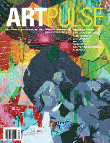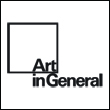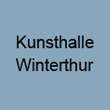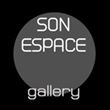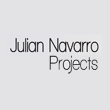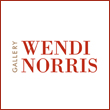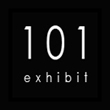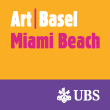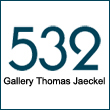« Features
Revisiting the past - The paintings of Gustavo Acosta

Gustavo Acosta. 38°C, 1991. Acrylic on canvas. 98” x 247”. Photo Rogelio Lopez Marin (Gory). Courtesy of the artist and Pan American Art Projects
By Irina Leyva-Pérez
If we look back at Gustavo’s oeuvre over a span of twenty years, we can easily recognize that he has been interested in social expressions of power. In the 1980s, when his work started receiving attention, he was using metaphors of Roman architecture as a reference to the Cuban social system. The dark, gray and muted colors were intentionally placed to reinforce the atmosphere of oppression that he wanted to convey. By representing some of the most recognizable buildings in Roman architecture, he drew a subtle parallel between the Imperial Roman and Cuban dictatorships. This was a period when he consciously avoided portraying Havana as a recognizable city, and mostly reverted to these urban similitudes to express his ideas. By appearing to cite the past, he was bringing to our attention a deeply-troubled reality, masked by the created perception of admiring a certain historical period. A classic of this tendency in his paintings is the daunting 38°C, from 1991, one of the last pieces that he created in Cuba. The massive and gloomy building is an imposing image, the kind of view that could provoke depressing thoughts; it deliberately tries to create a sensation of lost expectations.
Mil novecientos noventa y dos (1992) is a good example of a period when he included circular buildings in his works. He used as a model the Presidio Modelo de Isla de Pinos, an unusual prison building in Cuba, very peculiar and easily recognizable from its atypical geometric shape. The historic connotation of this particular building is a post-revolutionary one, since it was the prison where Castro was held in the fifties; it later became a museum. Crónica metereológica (The Weather Chronicle) (2004), another important piece that uses the same symbol, was recently sold at Sotheby’s. The image shows a long avenue with circular buildings as a backdrop. Gustavo places the buildings in the background where the road ends. In a way, it is like the end of a journey, the future ahead. The use of the same architectonical structure as the prison implies that the whole country has become just that: a prison, a road without future, a journey to nowhere.
Ideal (2002) reminds us of isolated urban landscapes by Giorgio de Chirico, appearing like slides of places suspended in time. Gustavo’s images show a similar sense of stillness throughout. Silence occupies an important place in his work, like Japanese N? theater, where emptiness is as essential as any other element in the piece. He is playing with that factor; the apparent bareness is totally balanced and intentionally placed there.
A la sombra de Tatlin (In Tatlin’s Shadow) (2003) displays one of the themes he was interested in during that period. The Tatlin Tower became the symbol of utopia par excellence in contemporary Cuban art. Its philosophy and the anecdote about the piece itself became a very clever way of saying that the social dream of equality was just that, utopia. After all, only a small number of people knew about Tatlin and his tower, so it could easily pass as a reference to the Russian period.
Dudas en la frontera II (Doubts at the Border II) (2005) shows a significant monument in Havana, a monument to the victims of the battleship USS Maine. This piece was intended to be part of a series in which he revisited Cuban history through its monuments. He is, in revisionist fashion, questioning the true versus “official” stories behind these monuments. An eagle placed atop the columns of the Monument to the Maine was removed at the time of the Revolution. Gustavo is portraying the monument as it is today, without the eagle, surrounded by a grey atmosphere. The official story of this tragedy is that it was sabotage. Forensic investigations are inconclusive, mainly pointing towards an accident. Gustavo utilizes this historic example to comment on the Cuban Government’s manipulation of history, creating alternative accounts tailored to its needs.
After moving to Miami, he continued his perseverant interest in expressions of power, but his attention moved in a new direction. He soon realized that the power of mass media was unsurpassed; the amazing extent of it and its overall influence was unparalleled. That is how he became fascinated with the media and its reach, and exploring it, he found himself inspired by it. He became an avid surveyor, canvassing printed, televised and electronic media. Among works that came from this obsession, we can mention two series: aerial views and nocturnal scenes. Gliding (2008) is one of these pieces, an aerial view of a city. It brings up a sense of omnipresence. Like in-flight observers, we can see what is happening down on earth, giving us the sensation of being able to change things. Reliquia (2008) is part of his night-vision series. Dominated by a greenish color, it replicates the visualization we get through night-vision goggles. He is alluding to the current and potential lack of privacy. This is apparent in Big Brother policies and the fact that all our personal information is available to practically anybody. We can be observed at all times, even in the intimacy of our private lives.
A painter par excellence, Gustavo explores all the possibilities that the media has to offer. He goes beyond a simplistic exercise to a mature and complicated conception. He deliberately composes each of his pieces, cerebrally and emotionally. These apparent cold images have layers upon layers of emotion, especially those which reflect Cuba. There is a sense of surrealism in his paintings, giving us a feeling that something is not right. It is way too quiet, almost as if we can hear the silence in the scene. Even when we see places that are noisy by definition, like airports, there is a sense of being deserted. It is not a matter of including human beings or not; it is a matter of capturing the silence.
Irina Leyva-Pérez: BA in Art History (University of Havana, Cuba). Former Assistant Curator at the National Gallery of Jamaica. Currently Curator of PanAmerican Art Projects. She resides in Miami, FL .

